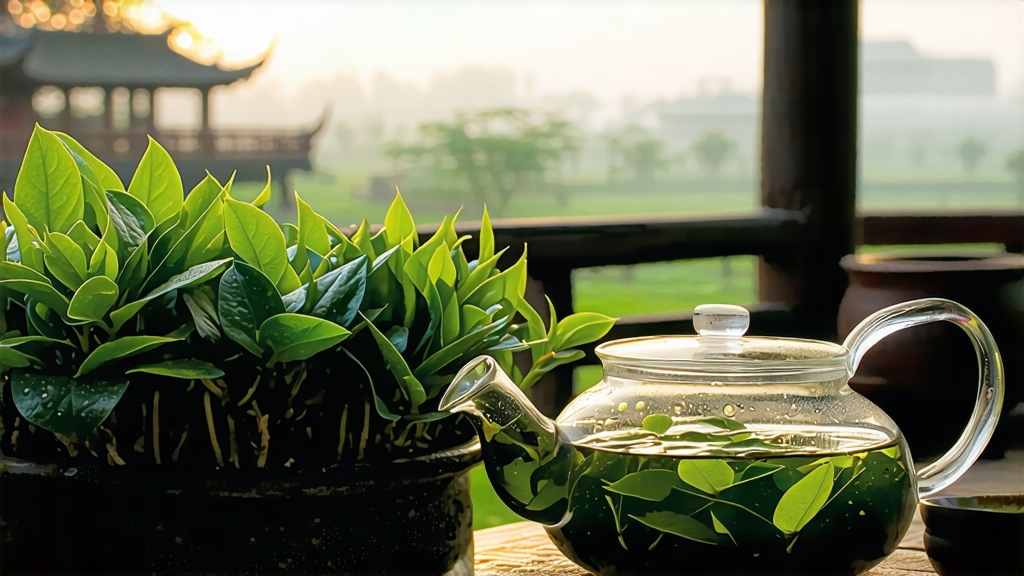
Tucked between the mist-laden Taihu Lake and the fruit-laden hills of Dongting Mountain in Jiangsu Province, Biluochun—literally “Green Snail Spring”—has captivated Chinese scholars, emperors, and now global tea lovers for over a thousand years. Its tiny, spiral-shaped leaves, downy silver tips, and intoxicating bouquet of apricot blossom and fresh cream make it one of the most distinctive green teas on earth. Yet beyond its charming appearance lies a story of maritime trade routes, imperial taste-making, and micro-climates so precise that a mere five-kilometer shift can alter the cup’s flavor profile. This article invites you to journey from Tang-dynasty monasteries to twenty-first-century tea bars, learning how to recognize, brew, and savor Biluochun like the growers themselves.
Historical roots
The first written record appears in the Tang Dynasty (618-907) monograph “The Classic of Tea,” where Lu Yu praises the tea of “Dongting Mountain” for its extraordinary fragrance. At that time the leaves were pressed into cakes, not yet rolled into the snail shape we know today. The name “Biluochun” itself was allegedly coined by the Kangxi Emperor during his 1699 southern inspection tour. When served an infusion whose aroma reminded him of the spring air beside Taihu Lake, he renamed the formerly rustic “Xia Sha Ren Xiang” (literally “scary fragrance”) to the more elegant “green snail of spring.” Court patronage elevated the tea to tribute status, requiring farmers to finish the entire harvest within the two-week window around Qingming festival; anything plucked afterward was deemed unfit for imperial lips. Maritime merchants later smuggled small caches to Canton, where European traders mistook the fuzzy pellets for moth cocoons yet still paid premium silver once they tasted the liquor.
Micro-terroir and cultivars
Authentic Biluochun comes only from the east and west peaks of Dongting Mountain, an island of weathered granite soils constantly bathed by lake vapor. The water body moderates temperature, creating a mist that filters sunlight into soft, diffused rays—ideal for slow amino-acid accumulation. Two main cultivars dominate: the small-leaf “Dongting Original” (Camellia sinensis var. sinensis cv. Dongting Qunti) prized for its natural fruitiness, and the newer “Fuding Da Bai Hao” grafting that yields larger buds but requires more skill to avoid grassy astringency. Purists insist that only the original strain, grown among peach, plum, and loquat trees, develops the subtle floral notes that echo orchard blossoms. Inter-planting is not cosmetic; fruit trees harbor insects that prey on tea pests, allowing farmers to avoid pesticides in this ecologically sensitive zone.
Plucking standards
The harvest begins when the tea bush awakens from winter dormancy and the first “one bud with one unfolding leaf” reaches 1.5–2 cm. Experienced pickers work at dawn while leaf cells are still turgid, pinching the shoot between thumb and index finger with a gentle upward twist that prevents bruising. Daily quotas are deliberately low—barely 500 g of fresh leaf per worker—because any mechanical pressure oxidizes the tender tissue and turns the final brew reddish. The plucked shoots are carried in shallow bamboo baskets lined with gauze; deep sacks would crush the bottom layers and generate unwanted heat.
Crafting the spiral: a six-hour marathon
Within four hours of plaching, the leaves enter a three-stage transformation that UNESCO has listed as intangible cultural heritage.
-
Withering: Spread 2 cm thick on bamboo trays, the leaves rest for 60–90 minutes in a shaded corridor where mountain breeze reduces surface moisture to 68–70 %. The goal is not desiccation but enzymatic quieting; too long and the green vibrancy fades, too short and the subsequent roll becomes flaky.
-
Fixation (shaqing): A wok heated to 180 °C receives 250 g of leaf per batch. The master’s palm, clad in a thin hemp glove, flips the leaves against the iron wall in a clapping motion that halts oxidation within three minutes. Temperature is judged by ear: the moment the rustling sound shifts from crisp to muffled, the wok is raked cooler. This step locks in the jade color and converts grassy aldehydes into sweet ketones.
-
Rolling and shaping: Now at 60 °C, the leaves are rolled under palm pressure along the wok’s rim, first in clockwise circles, then